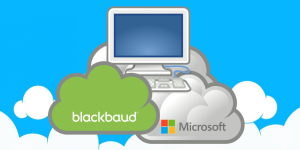Organizers of the Atlanta Summit on Global Health this past May were looking for a way to aggregate ideas for solutions to global hunger. It had to be easy to use and, more important, neat, because the responses were bound for the White House. When summit organizers asked Kiera Stein, web content manager for Atlanta-based nonprofit CARE, she immediately thought of Storify.
“Storify was a great way to aggregate the responses so I’m not sending some giant Word document of tweets, and to show what other people are saying,” said Stein. “It’s an easy way to aggregate content from different channels. It’s dynamic; you can update it, share it, embed it.”
The words “digital storytelling” mean different things to different people. To some, it’s video. To others, it’s photo collages. It can be a digital record of responses or aggregations of hashtags, as it was at the Summit on Global Health (#solutions2hunger). Nonprofits can, should and do embrace all types of digital storytelling, and often the barrier to entry is nothing more than the cost of a smartphone.
Storify is one such digital storytelling tool. Available on desktops and as an iOS and Android app, Storify lets users curate material from the social web into a postable and shareable format. “The way nonprofits and cause-oriented organizations use (Storify) are around their own campaigns,” said Burt Herman, co-founder of Storify. “They might be putting something out there with a hashtag, asking their community, what do you think, what’s happening where you are?”
Herman said nonprofits use Storify to engage constituents directly, like other forms of social media. “But you can use Storify for something more lasting,” he said. “You can post it on your own site for people who are maybe not watching social media, show how people are reacting.”
One of Storify’s strengths, said Herman, is that you can use text. “Why are you using it? To tell a story. That often gets lost in the social web. Storify allows you to pull out the most important bits of information and give it some context,” he said.
Stein said CARE’s social media audiences want different content than email or direct mail audiences, and they want to consume it in a different way. “They like to consume content with a lot of images, rich information in a quick format, often in a list platform, and things that are easy to navigate and come back to,” said Stein.
“We’ll usually run a campaign for a couple of days, tweet a question like ‘An educated girl will…,’” Stein continued. “We’ll ask people to tell us their thoughts and infuse our own stories and comments. We’ll aggregate that and tweet it back out. Those usually pick up pretty well.”
Sometimes, digital storytelling means video. “Most people are walking around with high quality video cameras in their pockets,” said Michael Hoffman, CEO of See3 Communications in Chicago, Ill. “The native apps within smartphones for photography and video are incredible. There are terrific add-ons to make them even more beneficial.”
The Center for Digital Storytelling (CDS), based in Berkeley, Calif., is a nonprofit that helps people tell their own stories. “We ask people to tell a story from their life,” said Daniel Weinshenker, director of CDS’s Denver office. “We help them find those stories and teach them the technology tools to turn that story into a digitial story, a little bit like a movie and a little like a slideshow. A big part of it is giving them media literacy and also reflective literacy to find the stories in their own life and tell them in engaging ways.”
Weinshenker said accessibility is key when teaching the communities CDS serves. “Sometimes we teach high-level stuff, but most of the time we try to teach our communities tools with the least barriers to entry,” he said. Some apps that CDS uses frequently include iMovie and iPhoto for Apple products (both computers and tablets). Weinshenker said he looks for cross-platform tools because, “We know whether someone comes in with an iOS tablet, an Android phone, a PC, a Mac, we can teach them something in video production and everyone will be using the same tools.”
One of CDS’s go-to tools is WeVideo. “It’s a video editing tool that allows you to upload a video by phone and do simple edits, but because it’s cloud-based you can go into your computer,” said Weinshenker. “It’s a good way to capture stuff and get it into a cloud-based environment.”
Bjorn Rustbergaard, co-founder and COO of the Mountain View, Calif.-based WeVideo, said the platform isn’t for nonprofits, specifically. “This is about storytelling, about democratizing. Everyone with a story has the opportunity to tell it,” he said.
Rustbergaard said nonprofits can apply for an educational license ($250 per year), which allows collaboration among up to 50 users. “If I’m making a story about civil rights, and I want to engage people all over the U.S., I can give them access to that account and I will get access to all the clips they’re making,” he said. “If I’m the editor, I can make compilations based on their stories.”
The fourth TechSoup Digital Storytelling Challenge (#TSDigs) will kick off this September. Applicants will submit photos or videos and have the chance to win prizes such as a computer, a video camera and software packages. “We now live in a very instant world, and the ability to choose what works for you and tell the stories are really powerful,” said Alexandra Bezdikian, interactive events and video producer for TechSoup Global, headquartered in San Francisco, Calif.
Contestants submit either videos or photos that tell stories of their organization. Photo entries are submitted through the photo sharing service Flickr. “We had an organizational connection with Flickr, so it made sense to align with them,” said Bezdikian, adding that TechSoup is also looking at other photosharing platforms.
Bezdikian is a big fan of Instagram. “There’s something extremely powerful for the consumer and fan to get a backseat view of, say, Rhianna’s personal life on Instagram,” she said. “Instagram is an app that has changed the way I see the world in many ways. It’s made things hugely personal, and that makes it hugely powerful.”
When it comes to video, short is hard to beat, said Bezdikian. Instagram, with its 15-second limit, is a strong video app, as is Vine, for which the limit is six seconds. “There’s something fresh about keeping it so short,” said Bezdikian. But both platforms allow for content that’s “long enough to see some really creative and inspirational content,” she added.
“When Vine came out, people thought, what can you do with six seconds?,” said Hoffman. “We’ve been seeing amazing things.” The trouble with Vine and Instagram, said Hoffman, is exclusivity. The videos you create on Vine and Instagram are stuck on those two platforms. “It’s hard to accrue benefits when your stuff is stuck,” he said.
Bezdikian also recommended anything that makes uploading videos easier, specifically mentioning YouTube Capture, an app for iOS and Android smartphones and tablets. “It makes sense: I capture a video and I can then press a button and publish it” directly to YouTube, she said, “versus taking a video with a smartphone, which is then stored in the library, which you have to open up and load onto the platform of your choice. It’s just more seamless.”
With all the choices for storytelling apps, it’s easy to get overwhelmed and to chase the newest, shiniest tool out there. That’s a mistake, said storytelling experts. “I think that mobile’s hot now. Everyone wants a piece,” said Bezdikian. “But, there are a lot of apps being created. There’s oversaturation.”
Weinshenker thinks that, despite the availability and accessibility of digital storytelling apps, storytelling might be harder now than it was in the pre-Internet world. It’s tougher for people to slow down and think about what makes a good story and what story they want to tell. “In less than 30 seconds, you can select a few dozen pictures in iPhoto, upload a song and press publish, but it’s harder to get people to reflect,” he said. “The more tools that are out there to connect with others, the less people connect with themselves.”
Digital storytelling is, first and foremost, storytelling. Weinshenker said you can’t lose sight of that when you’re telling your organization’s story. Find the narrative you have to tell, and only then decide on your tools. “Technology only comes after you’ve decided what you want to do with them,” he said. For nonprofits, Weinshenker said, storytelling is “about training them to listen to their constituents, the people they serve, how the nonprofit is making a difference in their lives, what’s the impact of their work.”
Hoffman of See3 wants nonprofit techies to ask one question before trying out the latest and greatest storytelling tool: Have you done this with the most basic tool? “If you’ve done that first, then you can figure out what you really need,” he said. “You can say, ‘This doesn’t work, what can we use?’”
Storytelling has to start with defining goals and success measurements, said Hoffman. “One way to ask that question is, if this effort is wildly successful, what happens?” Ask that question first to visualize what success looks like, and then you can determine the best path to success.
The second question should be, who is the audience? “Often the newest, coolest app is reaching an audience that’s not the target audience,” Hoffman said. If your donor file is full of donors whose average age is 50, you probably don’t want to be using apps or platforms where the average user is 22. “That’s not to say there aren’t other reasons to do that, but I think most organizations aren’t asking that basic question,” said Hoffman.
The third question is, what do you want to say, and what stories can say that? “Then your questions go into more detail, like what do you have access to and which of the stories you can tell will help you reach your goals,” said Hoffman. “Maybe all you have is the native smartphone photography app, so you don’t want to choose a video thing when you don’t have that asset. The last thing becomes choosing the right tool, but you get there by making business decisions first.”
Hoffman said nonprofit storytelling tips remain the same, whether your tools are online or off, on a PC, Mac, smartphone or tablet. “The organization is the moon,” he said. “The moon doesn’t shine its own light. It gets reflected light from the sun. The sun is the donor, the constituent, the people in the field. Don’t say, look at us, we did this. It’s turning it outward, you the donor did this, look at what these folks did and we’re just the vehicle for that to happen. That’s empowering.” NPT











